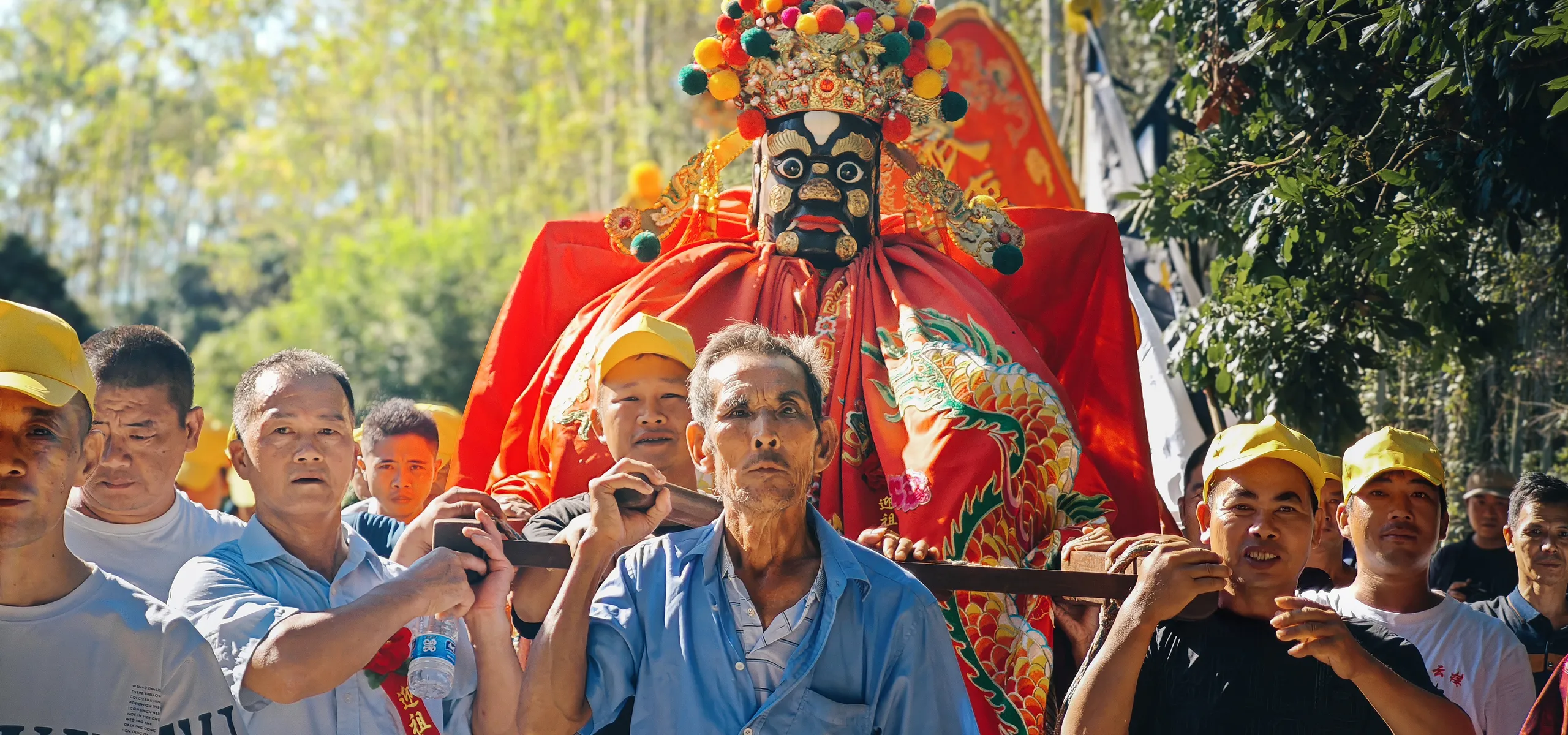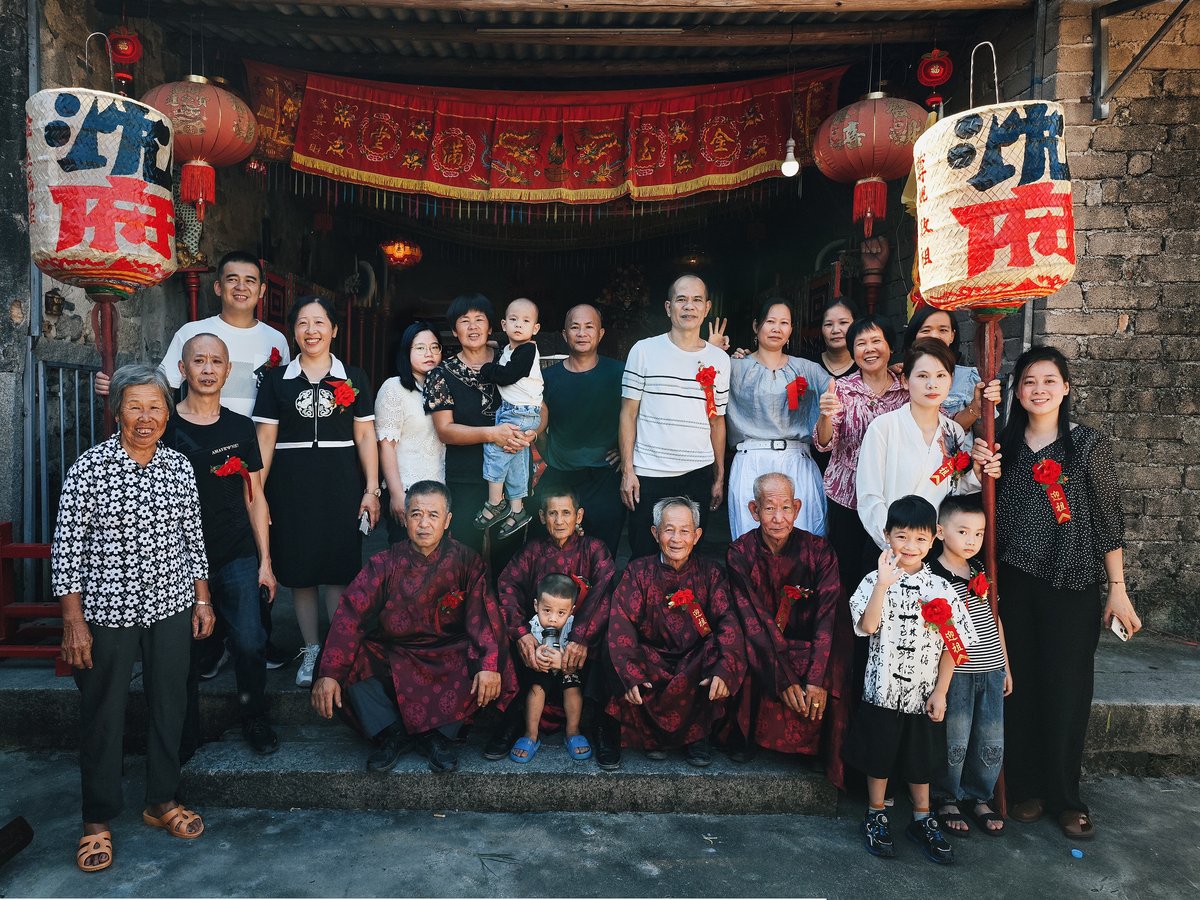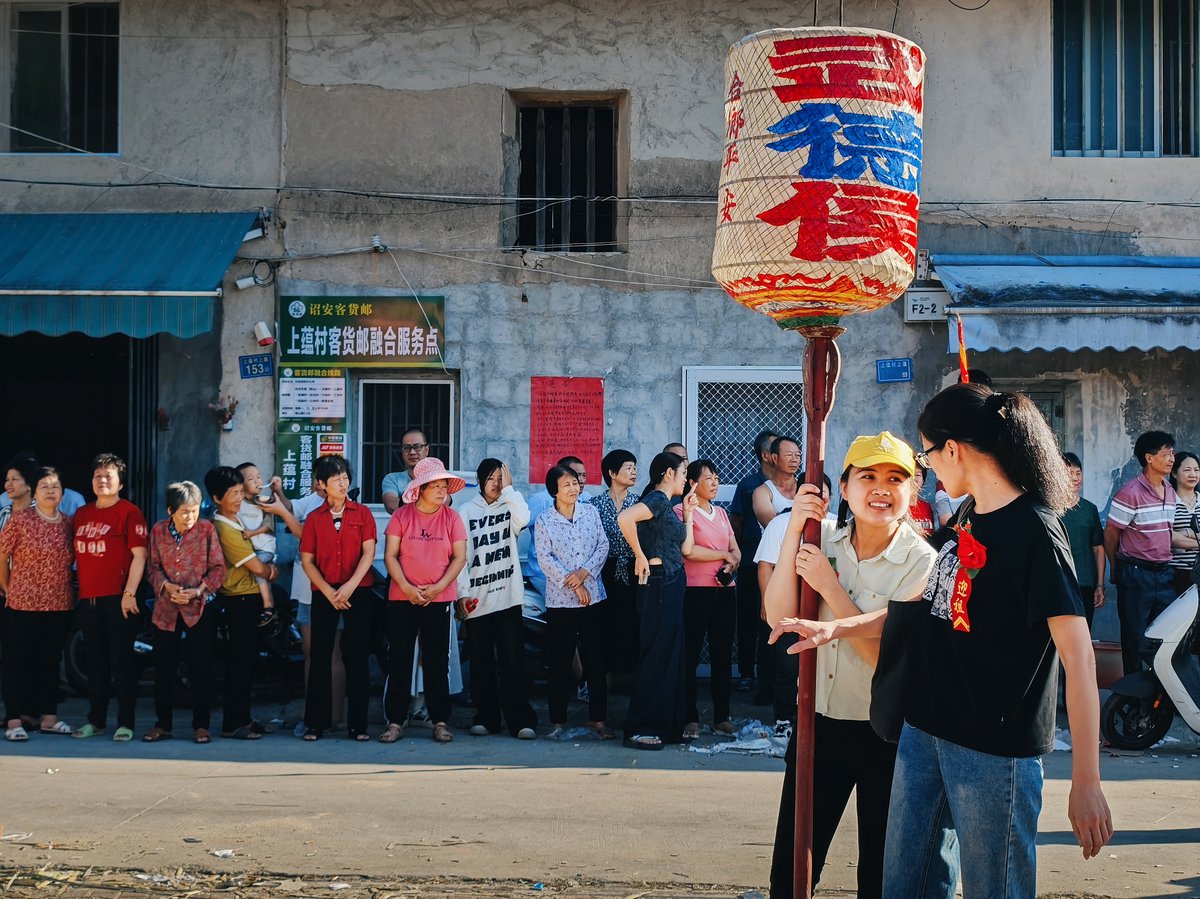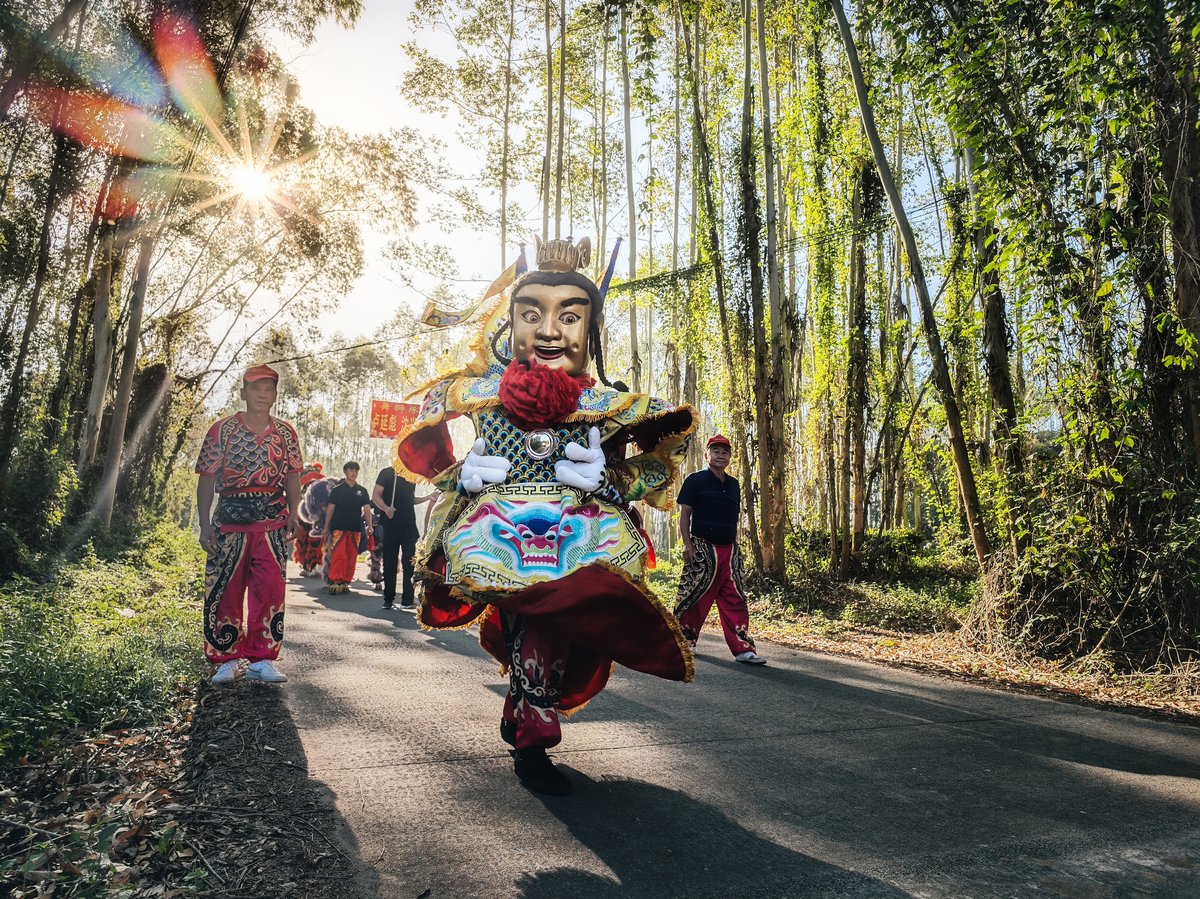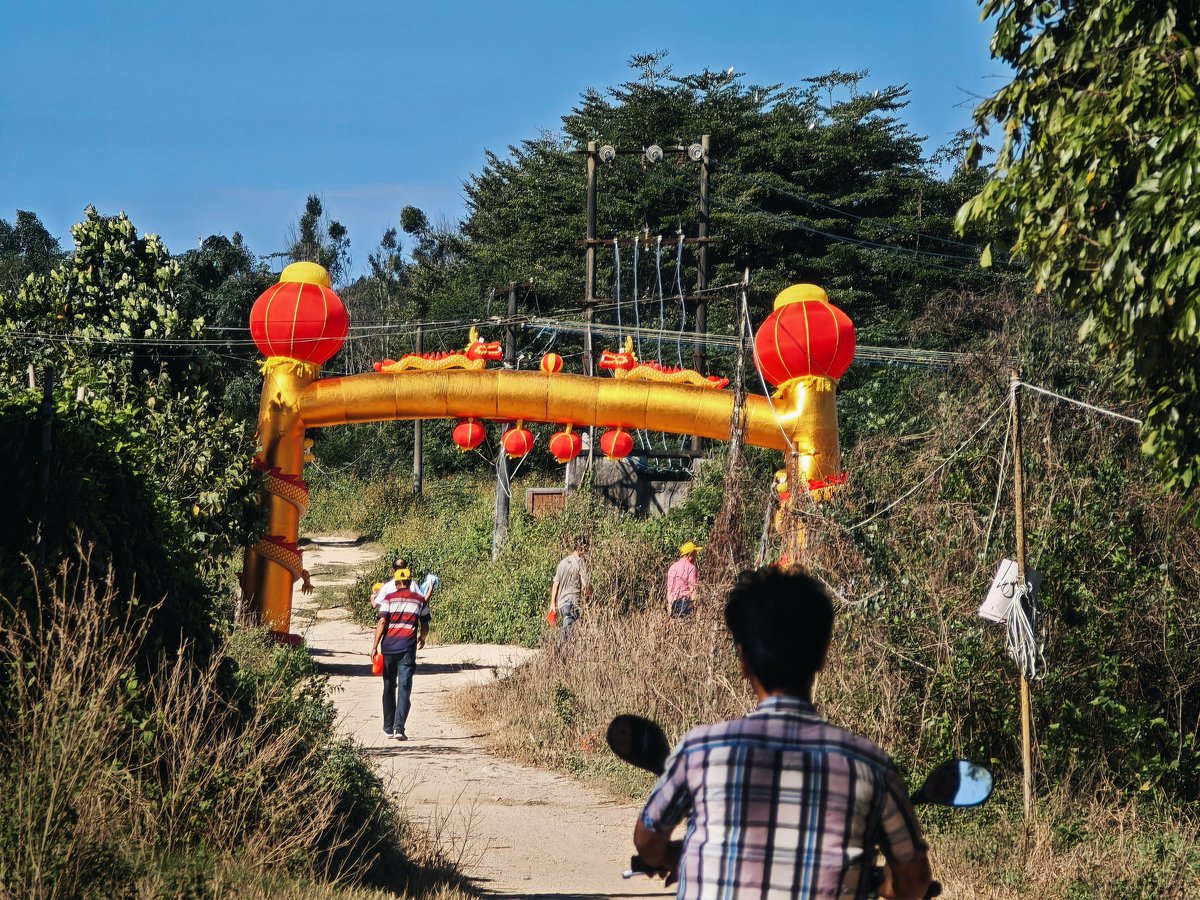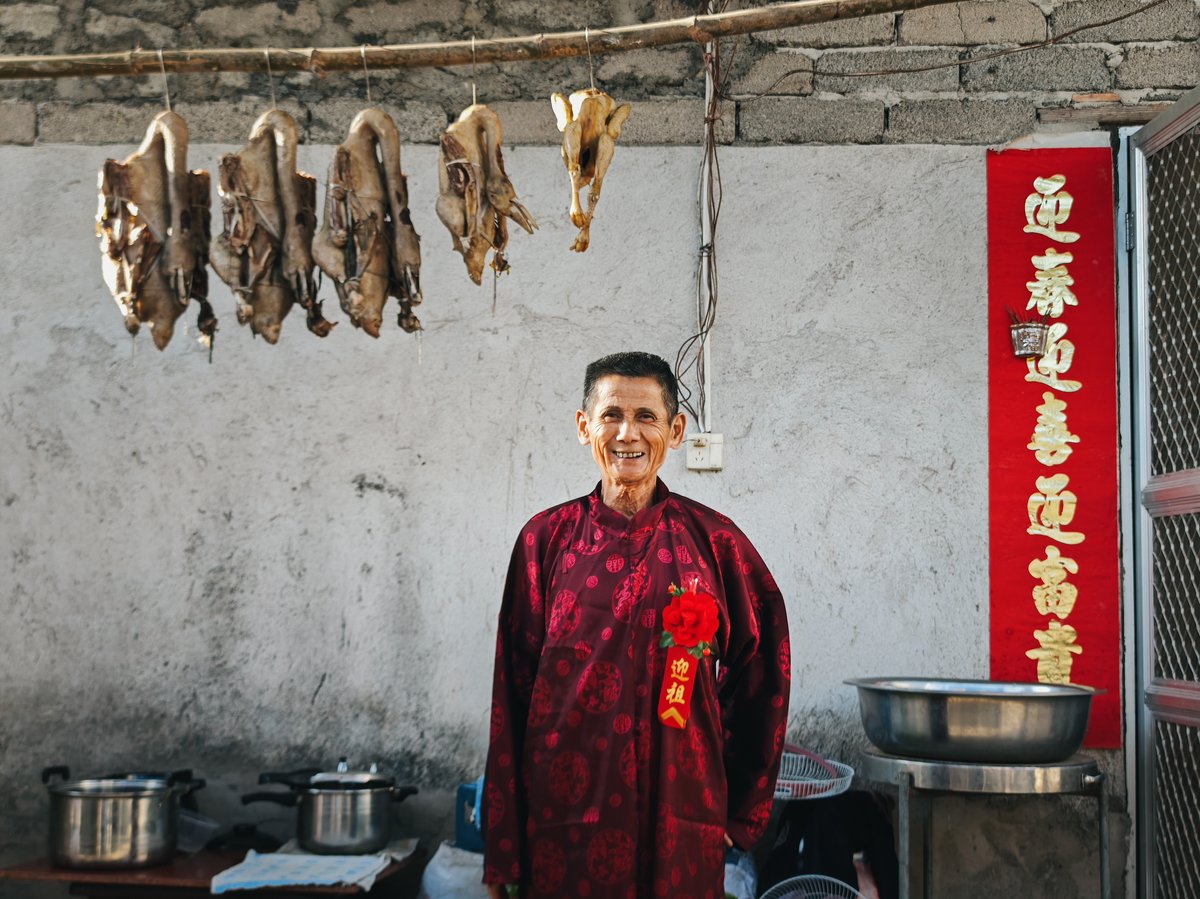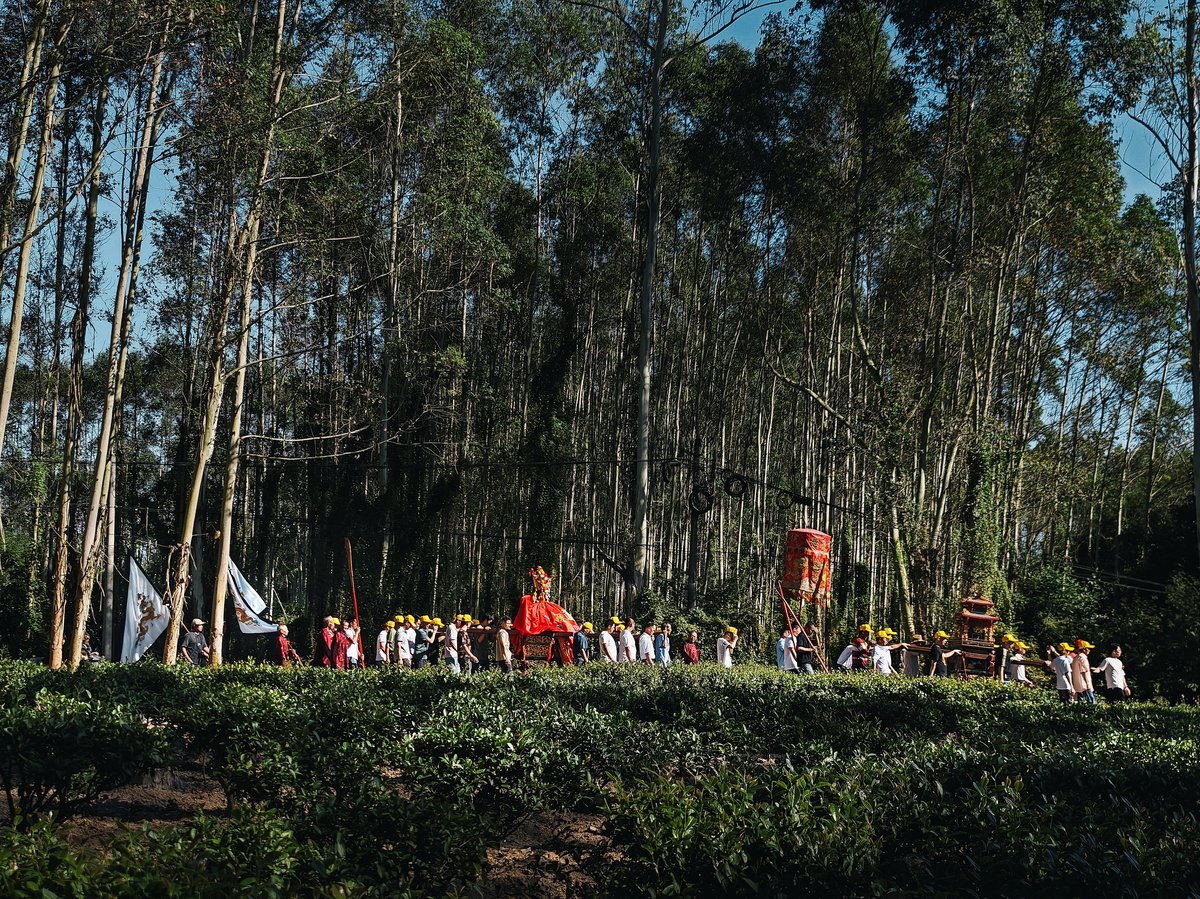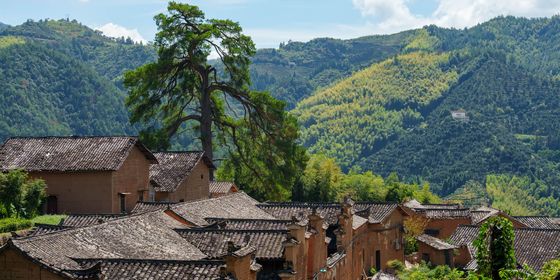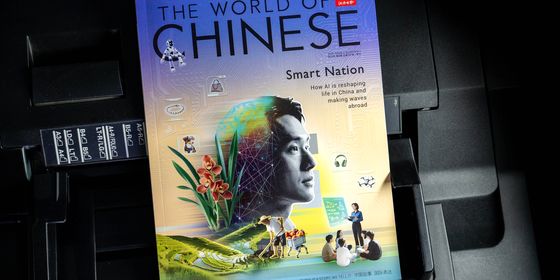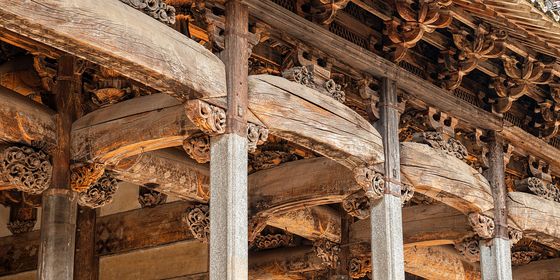Despite having only six households left, the “parading of the god” ceremony in Fujian’s Weixiang village continues each year, alive with color, techno music, and unwavering faith
Every year on the 20th day of the ninth lunar month, at around seven in the morning, beneath the soft glow of autumn light, the elders of Fujian’s Weixiang village don their ceremonial red robes and set out for one of the village’s most revered events: inviting the statue of “Lord Marquis of Martial Virtue,” their “Ancestral Lord,” from a neighboring village for a lively parade through their own streets.
At the village head’s command, they fall in step with the lion dancers and the gong-and-drum players, setting off on their slow-moving procession, known as youshen (游神, the parading of gods), with a handful of villagers bringing up the front and rear. The group is small—after all, Weixiang is the tiniest village in Zhao’an county, home to just around 30 residents.
Discover more traditional Chinese culture through photos:
- Walking on Fire to Celebrate Harvest Season
- Flames of Fortune: A Chinese Village’s Fiery Leap into the Lunar New Year
- Dragon on the Water
But that doesn’t make the ceremony any less impressive. Every household participates wholeheartedly. Despite its small scale, the festivities are complete: a Techno Prince Nezha (电音三太子) performance—a fusion of traditional folk dance and modern pop music—shares the stage with a parade of towering incense sticks over two meters tall, decorated with dragon motifs.
As the procession reaches the village that houses the Ancestral Lord, the crowd begins to swell. Married daughters of Weixiang return with their husbands, while respected local elders and cultural enthusiasts from neighboring villages gather. What starts as a small group soon blossoms into a lively throng of more than 200, making the celebration feel just as vibrant as those in larger villages.
In other villages, carrying the statue of the Ancestral Lord is a coveted honor. But in Weixiang, out of respect and trust for their guests, the villagers leave the task entirely to people from neighboring communities. The procession winds its way through the tiny village—a full circuit takes only about three minutes—giving a brief but lively glimpse of Weixiang’s narrow lanes and familiar homes. After the tour, the Ancestral Lord is invited to stay in the village temple for two days, before moving on to a neighboring village. Once the deity is safely installed, the visiting helpers carefully set the statue in place and gradually disperse, leaving behind a sense of shared community.
Amid China’s rapid urbanization, countless villages and the traditions once woven into daily life have quietly faded. Yet in this tiny village, where only a few households remain, the custom endures. Photographer Wu Cixin, a native of Zhao’an, captures these fleeting moments of devotion and heritage through her lens.





